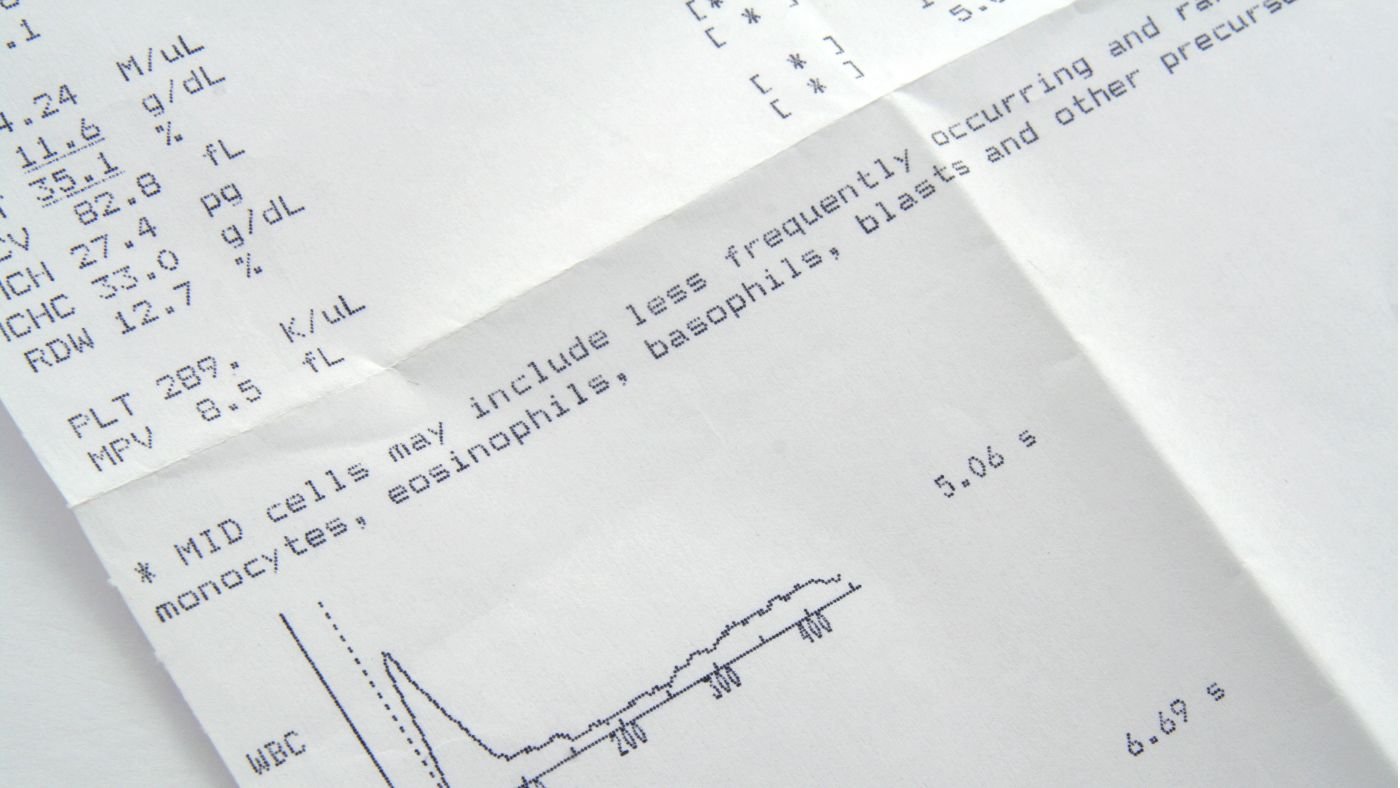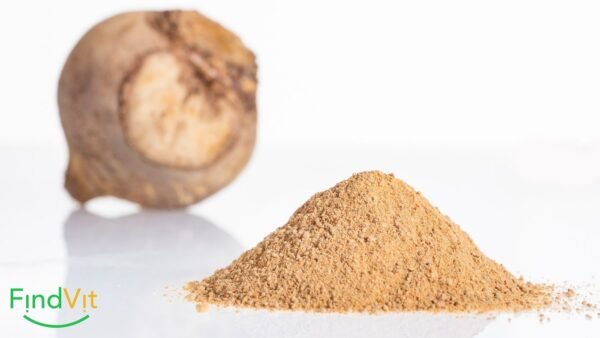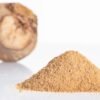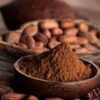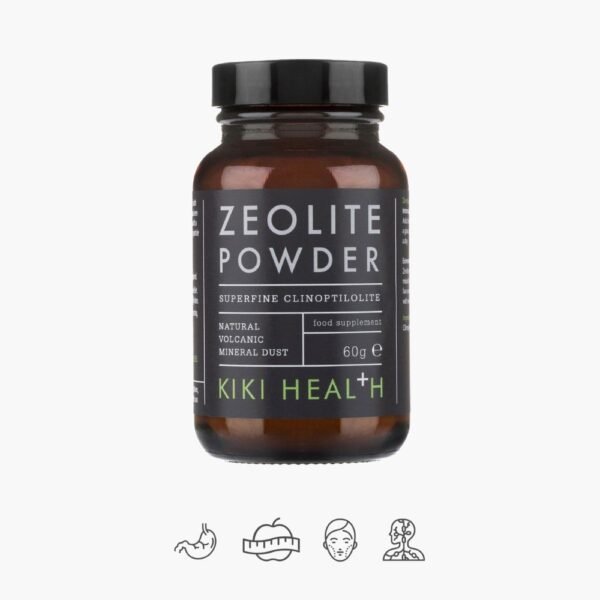A blood test is a laboratory test of a blood sample used to check for abnormalities, including the functioning of certain organs (such as the liver, kidneys, thyroid, and heart), infections, and certain genetic disorders, as well as to assess a person's general health.
After the sample is analyzed in the laboratory and the results are collected, in most cases a blood test report is issued. The report details the various blood components and their amounts. For those without a medical background, reports from blood tests can be complex and difficult to decipher.
We provide information to help you understand more about blood test results.
Abbreviations for blood tests
Blood test results typically use the metric measurement system and a variety of abbreviations, including:
- hmm: cells per cubic millimeter
- fL (femtoliter): one millionth of a liter
- g/dl: grams per deciliter
- TV/L: international units per liter
- mEq/l: milliequivalent per liter
- mg/dL: milligrams per deciliter
- Jr: milliliter
- mmol/l: millimoles per liter
- ng/ml: nanograms per milliliter
- PG (icons): one trillionth of a gram
Components of blood test results
A blood test usually includes a complete blood count, a complete blood count, a metabolic panel, and a lipid panel.
Confusingly, it is likely that the results of the three tests will not be separated from each other and will instead be listed on one large sheet. Each of them contains various sub-tests, which in general provide a broad picture of a person's health.
Complete blood count (CBC)
A complete blood count (CBC) focuses on three types of blood cells: white blood cells (WBCs), red blood cells (RBCs), and platelets. By measuring the volume of blood cells, a CBC allows a doctor to assess a person's overall health, as well as check for problems such as leukemia and anemia.
White blood cell (WBC) count
Also known as leukocytes, white blood cells are a major component of the body's immune system. A high white blood cell count can indicate the presence of an infection, while a low count can indicate a variety of problems, including HIV, leukemia, hepatitis, and arthritis.
Differential white blood cell count
The lab examines the five main components of white blood cells and their relationship to each other. If the components are out of balance, it can mean infection, as well as various health problems. Healthy proportions for each are:
- Neutrophils: from 40 to 60 percent of the total. The relative proportion of neutrophils is usually higher in bacterial and fungal infections.
- Lymphocytes: from 20 to 40 percent An increased number indicates a viral infection.
- Monocytes: from 2 to 8 percent. Elevated monocytes indicate chronic infections.
- Eosinophils: from 1 to 4 percent. Elevated eosinophils can indicate the body's fight against parasites, as well as a general immune response and inflammation.
- Basophils: from 0.5 to 1 percent An increased number of basophils indicates allergic reactions.
More detailed limits are provided in survey responses, as they are gender specific. Due to the different methods and features of the devices, they may differ slightly in different laboratories, so all this should always be taken into account.
Quickly absorbed
-
Sale Product on saleGarden of life Vitamin Code RAW B-COMPLEX - group B vitamins, complex, 120 vegan capsules
59,90 €Original price was: 59,90 €.47,90 €Current price is: 47,90 €. -
Enzymedica Digest™ Basic + PROBIOTICS-complex of digestive enzymes and probiotics, 30 vegetarian capsules29,90 €
-
Sale Product on saleBODY BIOTICS - Good bacteria, 30 vegetarian capsules
35,90 €Original price was: 35,90 €.21,50 €Current price is: 21,50 €.Rated 5.00 out of 5 based on 2 customer ratings
The number of red blood cells (RBCs).
Red blood cells (RBCs) carry oxygen to tissues throughout the body, so they are important for its healthy functioning. The red blood cell count evaluates the volume of RBCs in the human body - if the results show that the number is above or below the normal level, it may indicate to the doctor that there are various medical conditions. However, this form of testing cannot pinpoint the underlying or any underlying causes, meaning further testing will be required in such cases.
Hematocrit (Hct) test
Checks what part of the blood is RCBs. It is useful in diagnosing anemia if other medical conditions are also present.
Hemoglobin (Hgb) test
Hemoglobin is a protein found in red blood cells (RBCs) that carries oxygen from the lungs to the body's tissues. The hemoglobin test is also useful in diagnosing anemia, as many practitioners prefer this test to the hematocrit test.
Mean corpuscular volume (MCV) test
This test measures the average volume of RBCs, or the space each red blood cell fills. Results outside the normal range can be a sign of anemia or chronic fatigue syndrome, among other health problems.
Mean corpuscular hemoglobin (MCH) test
The laboratory examines the average amount of hemoglobin found in each red blood cell. A high level is a possible indicator of anemia, while a low level is a possible sign of malnutrition.
Red cell distribution width (RDW or RCDW) test
Tests the distribution of RBCs, not their actual size. Levels outside the normal range can indicate conditions such as anemia, malnutrition, and liver disease.
Platelets
Platelets are small cells that help blood clot. This test measures the amount of platelets in the blood. If the tests highlight a high number, it can indicate anemia, cancer or infection, while a low number can prevent wounds from healing and cause heavy bleeding.
Mean platelet volume (MPV)
Tests the amount of platelets in the blood. A low platelet count can cause bleeding problems, while a high platelet count can increase a person's risk of heart attack or stroke.
A popular general blood test
Here are the norms for the complete blood test:
| General blood test norms for women | ||
| Analyst | Norm limits | Units of measurement |
| WBC LEUKOCYTES | 3.90–10.20 for adults 18-65 years old. | *10^9/l |
| NEUTp Neutrophils | 42.0–77.0 For adults >18 years. | % |
| LYMp Lymphocytes | 20.0–44.0 For adults >18 years. | % |
| MONOp Monocytes | 2.0-9.5 For adults >18 years. | % |
| EOSp Eosinophils | 0.5-5.5 For adults >18 years. | % |
| BASOp Basophils | <1.8 For adults >18 years. | % |
| NEUTc Neutrophils | 1.50–7.70 For adults >18 years old. | *10^9/l |
| LYMc Lymphocytes | 1.10–4.50 for adults 18-65 years old. | *10^9/l |
| MONOc Monocytes | 0.10–0.90 For adults >18 years. | *10^9/l |
| EOSc Eosinophils | 0.02–0.50 For adults >18 years. | *10^9/l |
| BASOc Basophils | <0.20 For adults >18 years. | *10^9/l |
| IG# Immature granulocytes | <0.04 | *10^9/l |
| IG% Immature granulocytes | <0.6 | % |
| RBC ERYTHROCYTES | 3.90–5.20 for women aged 18–65. | *10^12/l |
| HGB HEMOGLOBIN | 120–156 for women aged 18–65. | g/l |
| HCT Hematocrit | 35.5–45.0 For women 18–65 years old. | % |
| MCV Mean erythrocyte volume | 80.0-99.0 For adults 18-65 years old. | fl |
| MCH Average amount of hemoglobin in an erythrocyte | 27.0–33.5 For adults 18–65 years old. | pg |
| MCHC Mean erythrocyte hemoglobin concentration | 315–360 For adults >18 years. | g/l |
| RDW-SD Erythrocyte Distribution Width (Standard Deviation) | 39.0-51.0 | fl |
| RDW-CV Erythrocyte Distribution Width (Coefficient of Variation) | 11.5-15.0 | % |
| NRBC# Nucleated erythrocytes | <0.01 | *10^9/l |
| NRBC% Nucleated erythrocytes | <0.1 | % |
| PLT PLAMETICS | 150–370 for adults 18–65 years old. | *10^9/l |
| PDW Platelet Distribution Width | 9,3-17,3 | fl |
| MPV Platelet mean volume | 9,2-12,8 | fl |
| P-LCR Large platelet fraction | 17,8-47,8 | % |
| PCT Thrombocrit | 0,18-0,37 | % |
| General blood test norms for men | ||
| Analyst | Norm limits | Units of measurement |
| WBC LEUKOCYTES | 3.90–10.20 for adults 18-65 years old. | *10^9/l |
| NEUTp Neutrophils | 42.0–77.0 For adults >18 years. | % |
| LYMp Lymphocytes | 20.0–44.0 For adults >18 years. | % |
| MONOp Monocytes | 2.0-9.5 For adults >18 years. | % |
| EOSp Eosinophils | 0.5-5.5 For adults >18 years. | % |
| BASOp Basophils | <1.8 For adults >18 years. | % |
| NEUTc Neutrophils | 1.50–7.70 For adults >18 years old. | *10^9/l |
| LYMc Lymphocytes | 1.10–4.50 for adults 18-65 years old. | *10^9/l |
| MONOc Monocytes | 0.10–0.90 For adults >18 years. | *10^9/l |
| EOSc Eosinophils | 0.02–0.50 For adults >18 years. | *10^9/l |
| BASOc Basophils | <0.20 For adults >18 years. | *10^9/l |
| IG# Immature granulocytes | <0.04 | *10^9/l |
| IG% Immature granulocytes | <0.6 | % |
| RBC ERYTHROCYTES | 4.30–5.75 for men aged 18–65. | *10^12/l |
| HGB HEMOGLOBIN | 135–172 for men aged 18–65. | g/l |
| HCT Hematocrit | 39.5–50.5 For men 18–65 years old. | % |
| MCV Mean erythrocyte volume | 80.0-99.0 For adults 18-65 years old. | fl |
| MCH Average amount of hemoglobin in an erythrocyte | 27.0–33.5 For adults 18–65 years old. | pg |
| MCHC Mean erythrocyte hemoglobin concentration | 315–360 For adults >18 years. | g/l |
| RDW-SD Erythrocyte Distribution Width (Standard Deviation) | 39.0-51.0 | fl |
| RDW-CV Erythrocyte Distribution Width (Coefficient of Variation) | 11.5-15.0 | % |
| NRBC# Nucleated erythrocytes | <0.01 | *10^9/l |
| NRBC% Nucleated erythrocytes | <0.1 | % |
| PLT PLAMETICS | 150–370 for adults 18–65 years old. | *10^9/l |
| PDW Platelet Distribution Width | 9,3-17,3 | fl |
| MPV Platelet mean volume | 9,1-13,0 | fl |
| P-LCR Large platelet fraction | 17,6-47,0 | % |
| PCT Thrombocrit | 0,16-0,35 | % |
Comprehensive Metabolic Panel (CMP)
A comprehensive metabolic panel test, also known as a chemistry panel, measures the body's glucose levels, fluid and electrolyte balance, and liver and kidney function. It consists of several additional tests:
Alanine aminotransferase (ALT) test
Alanine aminotransferase (ALT) is an enzyme produced mainly by liver cells. High levels may be a sign of liver damage.
Albumin test
Albumin is a protein produced by the liver. Its volume in the organ can be measured by this test. Abnormal levels can be caused by liver or kidney problems.
Total protein assay
The laboratory examines the ratio of two types of proteins: albumin and globulin. Low protein levels can indicate a variety of problems, including liver and kidney problems and malnutrition, while high levels can be a sign of inflammation, infection, or a bone marrow disorder.
Alkaline phosphatase test
Alkaline phosphatase is an enzyme normally produced in the liver and bone cells. Results above normal levels can signal liver damage and bone problems such as rickets or bone tumors.
Aspartate aminotransferase assay
Aspartate aminotransferase is an enzyme normally found in RBCs and muscle tissue, as well as in the heart, pancreas, liver, and kidneys. This test measures the amount of this enzyme in the body, and results above the healthy range indicate a variety of conditions, including some types of cancer, as well as liver, heart, or kidney damage.
Bilirubin test
Bilirubin is a biomarker for kidney and liver dysfunction that is useful in diagnosing conditions such as neonatal jaundice, anemia, and liver disease.
Blood urea nitrogen (BUN) test
This test measures nitrogen levels in the blood. High levels can be caused by kidney damage or disease, while low levels can be a sign of malnutrition or severe liver damage.
Calcium test
This test measures the amount of calcium in the blood. If tests show a low level, it could mean an underactive parathyroid gland, not enough calcium in your diet, or Vit D deficiency and other less common causes.
High levels can indicate causes including overactive parathyroid glands, overuse of Vit D supplements, kidney problems, and more worrisome causes that usually require further testing. Other parameters, such as total serum protein and albumin, are often required to properly interpret calcium levels.
Chloride test
This test measures the amount of chloride in the body. Elevated chloride levels can indicate dehydration, as well as kidney problems and adrenal dysfunction.
Creatinine test
Creatinine is a molecule important for building muscle energy. Elevated creatinine levels may be a sign of kidney dysfunction.
Fasting blood sugar test
Blood sugar levels are easily affected by recently consumed food or drinks. Therefore, a fasting blood sugar test is performed after at least six hours of fasting. Abnormal results can indicate diabetes, among other health conditions. More information - Blood sugar table: blood sugar (norms)
Phosphorus test
The laboratory examines the level of phosphorus in the blood. Elevated levels can indicate problems with the kidneys and parathyroid glands, and can be a sign of poor diet or alcohol abuse. If you abuse alcohol, it is presented How to cleanse the liver from alcohol damage.
Potassium test
Potassium helps communicate between nerves and muscles, regulates the heart and supports muscle function. Diuretics (a substance or medicine used to increase urination) can cause potassium levels to drop.
Sodium test
Sodium is a mineral that helps with nerve impulses and muscle contractions, as well as balancing water levels. Lesions are a possible sign of dehydration, adrenal disorders, corticosteroids, and kidney or liver problems.
If the amount of minerals is determined, it can be restored by adjusting the diet or using quality supplements:
Lipid panel
A lipid panel consists of various tests used to measure different types of triglycerides (fats) and cholesterol in the blood.
Total cholesterol test
This test measures total LDL (bad) and HDL (good) cholesterol in the blood.
Triglyceride test
Tests for triglycerides, a fat found in the blood. The lesions are a potential risk factor for heart disease and other health conditions.
HDL cholesterol test
HDL cholesterol, also known as high-density lipoprotein (or good cholesterol), is helpful in protecting against heart disease. Low levels can increase the risk of heart problems.
LDL cholesterol test
LDL cholesterol, also known as low-density lipoprotein (or bad cholesterol), is linked to heart disease and clogged arteries.
More on Cholesterol - How to reduce the amount of "bad" cholesterol
Total LDL cholesterol to HDL ratio test
Calculating this ratio can help determine a person's risk of developing heart disease. It is determined by dividing HDL cholesterol by total cholesterol. High levels are a possible indicator of heart problems.
It's important
It is important to understand that the blood test should be evaluated in general (that is, to evaluate not only one abnormal indicator, but to review the totality of indicators) and to review each patient with a blood disease individually. Judging depending on the stage of the disease/treatment. When treating people with blood diseases, the blood test varies from day to day. After chemotherapy, blood indicators "fall", then recover, many indicators are distorted.
In the blood test results, next to the patient's specific blood parameters, the norms of the laboratory where the test was performed are usually given. Due to different methods and features of the devices, they may differ slightly in different laboratories, so this should always be taken into account.
It is important to rememberthat everyone's health is individual and there is no common recipe for everyone!
So, if you want to know what nutrients your body might be lacking right now, health professionals recommend a guide – "Your Day".
- In time, pay attention to the signals sent by your well-being
- Replenish the body with natural minerals, vitamins and nutrients necessary for health.
- Enjoy energy and good mood everyday!
The information is prepared based on information.
